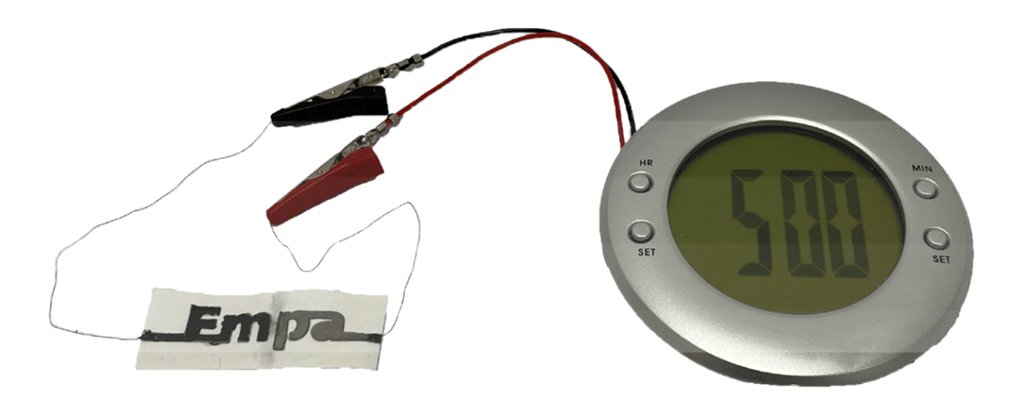Products You May Like
A newly developed, water-activated disposable paper battery promises to make a big impact on single-use electronics – those temporary gadgets used in medical and industrial fields where electronic waste can quickly start piling up.
The battery that has been demonstrated by researchers is biodegradable, made from sustainable materials, and cheap to put together. What’s more, it can be produced in a variety of shapes and sizes as needed.
To give an idea of the power, a two-cell battery made using the technology was enough to power an LCD alarm clock. While it won’t be charging up your laptop anytime soon, there’s lots of potential for low-powered sensors and trackers.
“We present a printed paper battery developed to power single-use disposable electronics and to minimize their environmental impact,” write the researchers in their published paper.
“The battery is based on a metal-air electrochemical cell that uses zinc as a biodegradable metal in the anode, graphite in the cathode, paper as a separator between the electrodes, and a water-based electrolyte.”
The battery, made from sodium chloride salt-diffused paper, can measure as little as one square centimeter (0.15 square inches), and is based on printed inks: one ink contains graphite flakes and acts as the cathode (positive end), while another on the other side of the paper contains zinc powder and acts as the anode (negative end).
A third ink, composed of graphite flakes and carbon black, is printed on both sides, on top of the other two inks, connecting the positive and negative ends to two wires. These are attached at one end of the paper, dipped in wax.
All that’s needed, then, is a small amount of water, as little as two drops. This dissolves the salts within the paper, releasing charged ions that then activate the battery as they travel. The circuit is closed by attaching the wires to the electrical device, meaning that electrons can be transferred from the negative to the positive ends.
With a stable voltage of 1.2 volts, the paper battery is close to the level of a standard AA alkaline battery at 1.5 volts. The battery starts producing power around 20 seconds after water is added, as per the experiments carried out by the team.
“This demonstration shows that despite its limited power density when compared to standard technologies, our battery is still relevant for a wide range of low-power electronics and the Internet of Things ecosystem,” write the researchers.
Although the performance decreases over time as the paper dries out, it can be topped up to some extent with more water. With extra water, the battery can still be producing 0.5 volts two hours after first being activated.
This is very much a proof-of-principle study for the time being, but the battery described in the paper isn’t overly complicated to produce. The researchers say they want to improve the efficiency of the battery in the future, and get it working for longer.
“With a rising awareness of the e-waste problem and the emergence of single-use electronics for applications like environmental sensing and food monitoring, there is a growing need for low environmental impact batteries,” write the researchers.
“This shift from traditional performance-oriented figures of merit creates new opportunities for unconventional materials and designs that can provide a balance between performance and environmental impact.”
The research has been published in Scientific Reports.
